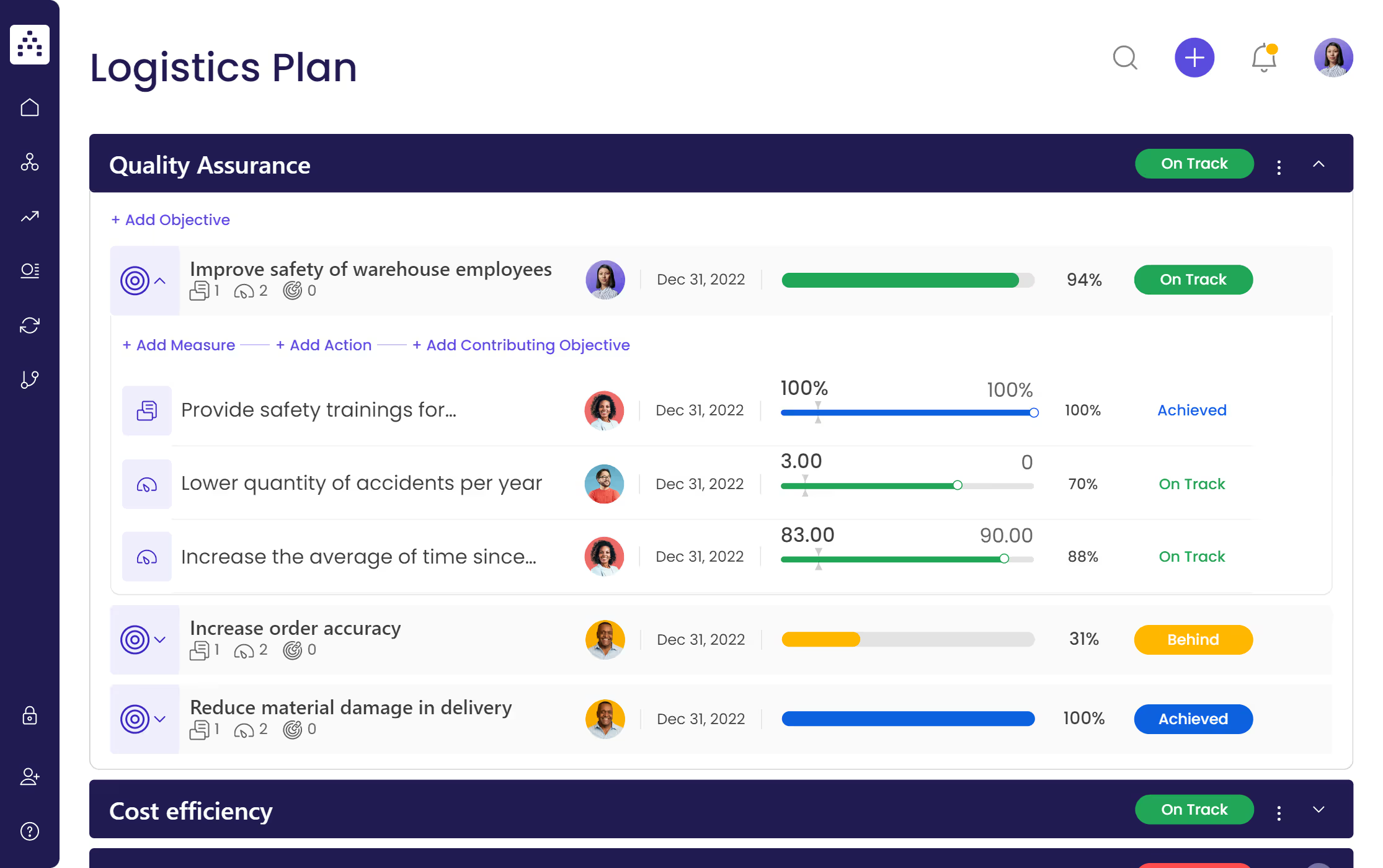What is a Logistics Strategy?
A Logistics strategy plan is a comprehensive, and integrated planning process focused on increasing the value for the customer by achieving a competitive advantage. Such a strategic template will help with anticipating future demand for logistics services and resource management.
What's included in this Logistics Strategy template?
- Logistics Strategy statement
- 4x Logistics Strategy Values
- 4x Logistics Strategy Focus Areas
- 11x Logistics Strategy Objectives
- 11x Logistics Strategy Projects
- 22x Logistics Strategy KPIs
Who is this Logistics Strategy template for?
Logistics templates can be used by supply chain management professionals (see supply management strategy template), but also human resources team, people and culture, inventory managers, and line managers. This will be most useful to logistic managers who are in charge of inventory management, purchasing, organizing, and planning of these activities.
How is this Logistics Strategy template relevant to your organization?
Effectively planning Logistics strategies can improve the effectiveness of the organization's ability to manage resources, planning, and purchase management. Such a strategy will help your organization improve its merchandising and availability of products.
1. Define clear examples of your focus areas
A focus area is a view that groups requirements and objectives to narrowly categorize a set of targets. The best way to create focus areas would be to see what areas your strategic plan can be divided into and focus on them.
An example of a focus area within this logistic strategy template is: Customer Response or Inventory planning and management
2. Think about the objectives that could fall under that focus area
A strategic objective is the big picture goals of a company. They describe what the company will do to fulfill its vision and mission statement.
Within this Logistics template, the objectives can be seen as broad targets associated with a specific focused area. It is important to ensure each focus area has at least 2-4 objectives set to tackle that focus area and help align the company in achieving its targets.
An example of an objective within the focus area 'Inventory planning and management can be: Maintain optimal inventory
3. Set yourself key performance indicators (KPIs) to tackle the objective
A lot of organizations forget that after setting your objective, it is important to actually set KPIs as progress trackers for measuring your targets in order to achieve those strategic objectives. KPIs are also important in allocating employees with accountability and responsibility for their tasks and ensuring the job at hand gets done.
An example of a KPI that could be implemented for the objective area 'Maintain optimal inventory' could be but is not limited to: Decrease order processing time from 48 to 24 hours.
Find out more about what KPIs best link to your organization from Cascades's useful article centralizing on 84 Key performance indicators.
4. Implement related projects to achieve the KPIs
Whilst KPI's as key performance indicators are important to have, your logistic strategy plan should also incorporate projects as a way of measuring and calculating certain targets set out. These projects can also be recognized as organizational initiatives to action plans.
Projects are carried out with careful planning to achieve an aim, which in this instance would be the correlating objective.
An example of a project within the Logistics strategy plan can be: System monitor to track the efficiency of inventory or Performance metrics in place
5. Utilize Cascade tools to track and visualize performance.
A final useful part of Cascade to use is the Dashboard. This is a tool where you can map out and visualize your projects and KPIs. There is also the option to select which KPIs you want to track and is very useful in seeing who is in charge of what project or KPI.
The dashboard tool comes with the widget in the form of goals, tables, and many more. Never underestimate the power of visual tools in aiding your strategy plan.


